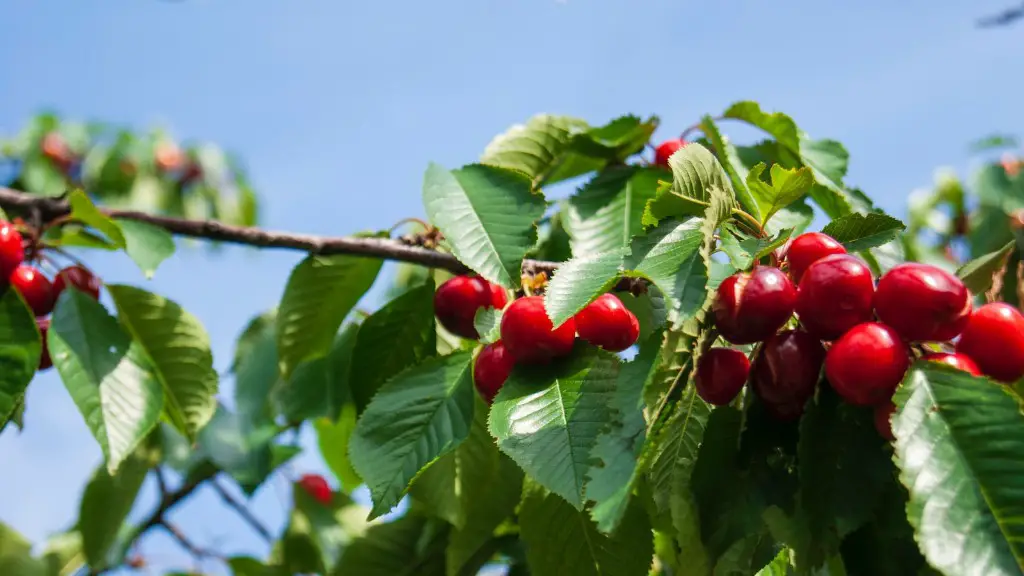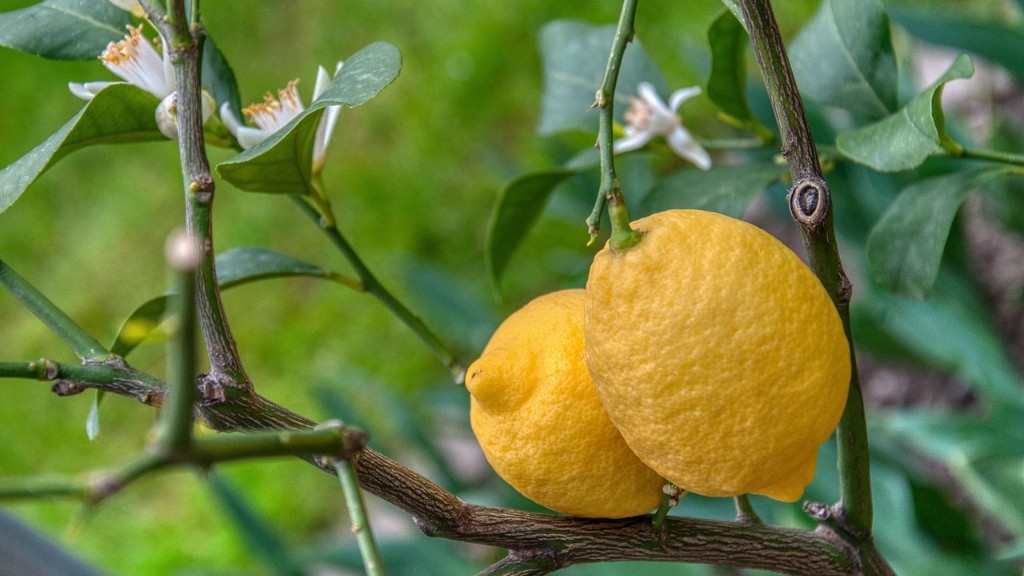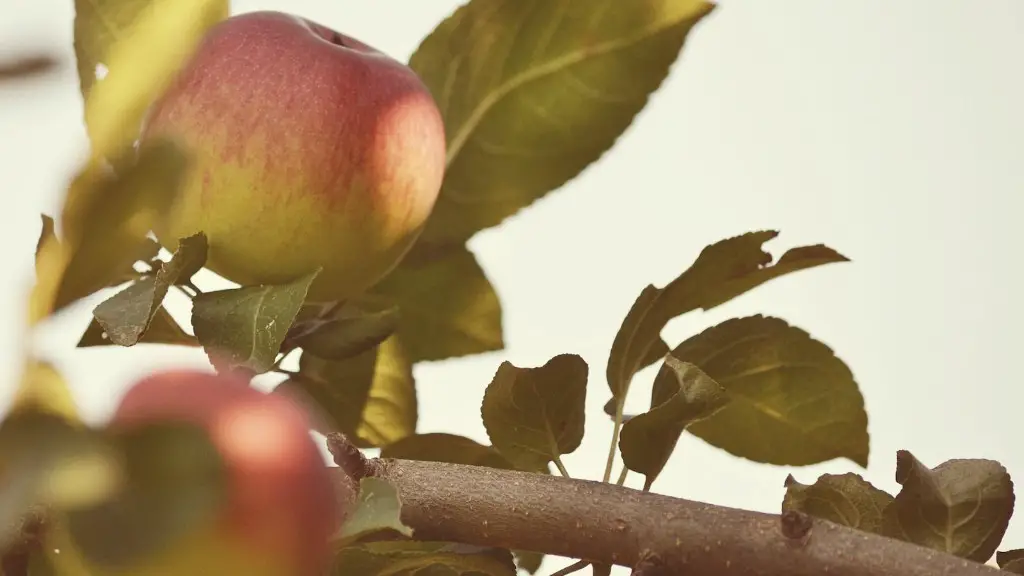A cherry tree can produce fruit for decades if cared for correctly and with the right conditions. It can take up to 6 years before a young cherry tree produces its first fruit, but it is a true joy when it does. The sweet flavor of fresh-picked cherries is one of summer’s greatest pleasures, and growing a cherry tree from seed to harvest is an adventure that many gardening enthusiasts embark on each spring.
Cherry trees require full sun and well-draining, nutrient-rich soil for optimal growth and fruiting. They need at least 6 hours of sunlight daily and water on a regular basis, which can be difficult in the hot, dry summers of many regions. Pruning and fertilizing the tree throughout its growing season can also help to ensure a plentiful harvest.
It is important to note that not all cherry trees will produce fruit the same year they are planted, and it can take up to six years before they will begin to fruit. Young trees should be pruned and thinned early to improve airflow and reduce stress. When the tree begins to blossom, thinning should be done again to encourage larger, sweeter fruit.
When purchasing a cherry tree, it’s important to be aware that different varieties have different fruiting times. Some varieties, such as sweet cherries, are ready to harvest in approximately four years, while sour cherries can take longer. It’s best to talk to a local expert or garden specialist for advice on selecting the right variety for your needs.
As cherry trees age, they begin to produce fewer and smaller fruits, so it is important to watch for signs of stress from environmental factors and pests. The tree should be inspected regularly for signs of disease and insect pests, and treated with the appropriate insecticides or fungicides as needed. Additionally, watering on a regular basis and properly pruning the tree can help to ensure a bountiful harvest year after year.
So when it comes to how old a cherry tree needs to be before it fruits, the answer varies. Many varieties take at least six years to produce fruit, but with the right care and conditions, a cherry tree can provide decades of delicious fresh fruit for you to enjoy.
Fruit Quality
When harvesting cherries, it’s important to note that the ripeness of a cherry determines its quality. Bruised, over-ripe or shriveled cherries will not be as sweet and flavorful as those that are perfectly ripe. Many home growers check the color of their cherries and wait until they are a deep red to harvest, which will usually guarantee the best flavor.
Most cherry varieties are ready to harvest when the flesh beneath the stem is dark red in color. If the cherries are ready to harvest, they should come off the tree with a slight twist. If they don’t come off easily, they are not yet ripe. If the flesh is too soft or mushy, it’s best to leave them on the tree a bit longer.
For optimal taste and texture it’s best to consume cherries within a few days of picking, but they can also be frozen for much longer storage. Most cherry varieties will store for up to three months in the freezer. Be sure to blanch them first and remove any stems before freezing.
Harvest Time
The time of year when cherry trees are ready to harvest varies by variety and climate. Most sweet cherries are typically in season in late May through early July, while sour cherries are in season in mid-June through mid-July. For more exact dates, it’s best to check your local extension service or do some research on the specific varieties you are growing.
Cherries that are picked too early may never ripen properly and will tend to be sour and bitter. Waiting to pick cherries until they are ready can help ensure that they are sweet and flavorful. They should be picked when the stem snaps easily away from the stem without pulling or twisting.
Additionally, when harvesting cherries it’s best to pick them directly into the container you plan to store them in. Any time spent in the hot sun or sitting in water can damage the cherries and shorten their shelf life. Be sure to inspect each cherry for signs of pests or diseases before picking and discard any damaged or diseased fruits.
Growing Tips
Growing a cherry tree is a great way to enjoy fresh fruit year after year. It takes a bit of patience, but with proper care, a cherry tree will bear fruit for years to come. Here are a few tips to help ensure a bountiful harvest each season.
- Plan ahead: When planting cherry trees, keep in mind that it can take up to six years for the tree to produce its first harvest. So plan accordingly and get patient!
- Sun and soil: Cherries need full sun and a nutrient-rich, well-draining soil for optimal growth and fruiting. If you’re unsure about the fertility of your soil, a soil test can help determine what it needs in terms of nutrients or amendments.
- Watering: Cherries require regular watering, especially during dry summer months. A healthy cherry tree should receive at least an inch of water per week.
- Fertilizing: Fertilizing your cherry tree twice each season — once in the early spring, and then again in mid-summer — will help to ensure a bountiful harvest year after year.
- Pruning: Pruning is an important step in keeping your cherry tree healthy, vigorous, and productive. Prune early in the spring to remove any dead, diseased, or damaged branches, and thin out dense clusters of blooms to ensure larger, sweeter fruit.
Pests and Diseases
Cherry trees can be susceptible to a variety of insect pests and diseases, which can reduce yield or even kill the tree. Common insect pests to watch for include caterpillars, aphids, spider mites and tarnished plant bugs. Common diseases include brown rot, blight and cankers.
It’s important to inspect your cherry tree every few weeks for signs of disease or insect damage. If you notice any signs, consult a local expert or your county extension office for advice on the best course of action. Proper pruning and fertilizing can also help to discourage pests and diseases.
Health Benefits
Cherries are not only delicious, they are also quite good for you! Studies have shown that consuming cherries, either fresh or frozen, can help with inflammation, digestion, heart health, and more. They are packed with nutrients and antioxidants that provide numerous health benefits.
Cherries are an excellent source of vitamin C, along with vitamins A, B6 and B12, as well as minerals like potassium and phosphorus. They are also high in antioxidants, which help to neutralize free radicals and protect the body from oxidative stress. Research has also shown that eating cherries can reduce risk of heart disease, boost immunity, and even aid in weight loss.
Remember that nothing compares to the flavor and sweetness of a fresh, locally-grown cherry! So why not plant a cherry tree to enjoy this summer (and many more to come).



